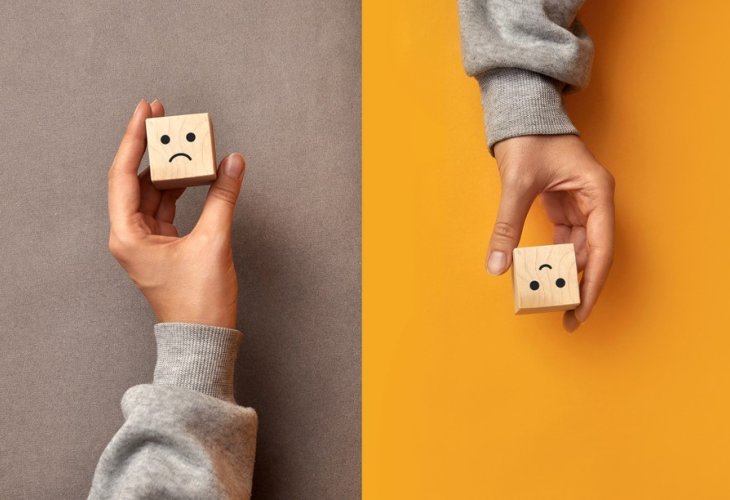Personality Development
Transform Negative Thoughts into Realistic Ones
Discover how CBT can help us understand the beliefs behind our thoughts.
 (Image: shutterstock)
(Image: shutterstock)We’ve entered the month of Adar Bet. The Hebrew word “Adar” can be broken into “Alef-Dar”, meaning “G-d dwells” — in other words, Hashem is with us. It’s important to remember that He is always present, guiding every event in our lives. Our role is to trust Him and be joyful (Tanya, Likutei Amarim 41).
The Alter Rebbe, in chapter 26 of the Tanya, teaches that we can't overcome our negative inclinations with laziness and heaviness, which come from sadness and worry. Instead, we need to act with energy that comes from joy. That’s why there’s a well-known saying: “It’s a great mitzvah to always be joyful.” Joy makes it easier to serve God. But even so, we shouldn't feel down if we fall short.
In Rebbe Nachman’s Stories of the Tzaddik Who Fell Into Sadness, he shows us that even great spiritual people can fall into deep sadness, heaviness, or even depression. In the story, the tzaddik feels so overwhelmed that he literally can’t move: “Whatever he tried to do to make himself happy, the sadness crept in. It was impossible for him to feel any joy.”
How can we get out of that kind of sadness?
In CBT (Cognitive Behavioral Therapy), there are several helpful tools. One of them is called “The Downward Arrow Technique.” It helps us dig down to the root belief behind the negative thought and replace it with a more balanced and encouraging one.
CBT Tool: The Downward Arrow Technique
Start with the thought that’s bothering you. For example:
“I’m a bad mom; the house is always a mess.” Then ask yourself: “If that’s true, what does that say about me?”
Let’s go through it step by step:“If the house is messy, what does that mean about me?” → “It means I’d rather do other things than clean.” “If I’d rather do other things than clean, what does that mean?” → “It means I have too much on my plate.” “If I have too much on my plate, what does that mean?” → “I overload myself with things to prove I'm worth something.” → “That means... I don’t believe in my own self-worth.”
Identifying the Core Belief
By asking this repeated question — “If X is true, what does that say about me?” — we get to the core belief that’s driving the thought. These core beliefs often fall into three types:
Negative beliefs about ourselves (e.g., “I’m not good enough”)
Negative beliefs about others (e.g., “No one will love me”)
Negative beliefs about the future (e.g., “I’ll never succeed”)
Challenging the Core Belief
Once we’ve identified it, we ask: Is this belief always true? Could it be an exaggeration of something unlikely to happen? Am I underestimating my ability to handle this? Is it possible that I’m misinterpreting the situation? Can I see this from another perspective?
These questions help us realize that the belief is overgeneralized, extreme, or inaccurate. Once we recognize that, we can reframe it into a more balanced thought that still feels true but is healthier and more empowering.
For example, instead of “I’m a bad mom,” you might say: “I’m overwhelmed right now, but I’m doing my best for my family.” Or “Even if the house is messy sometimes, that doesn’t define me as a mother.”
The key is to rephrase the thought into something realistic and compassionate — something that acknowledges your efforts and strengths.

